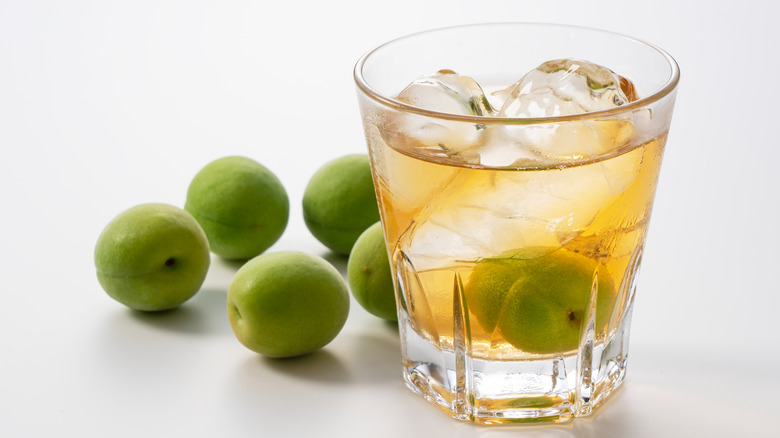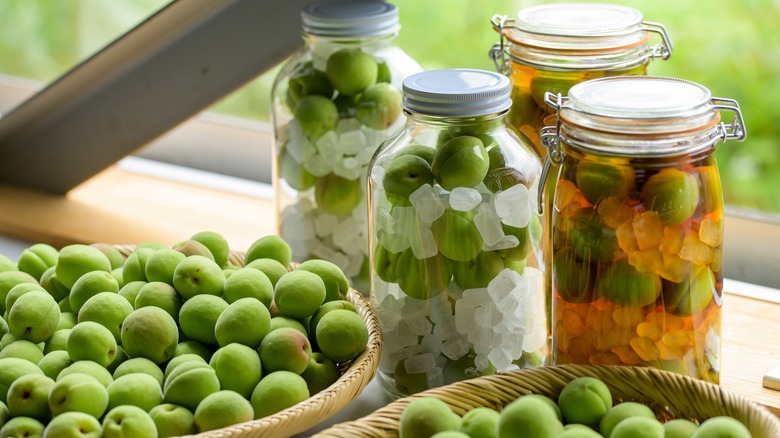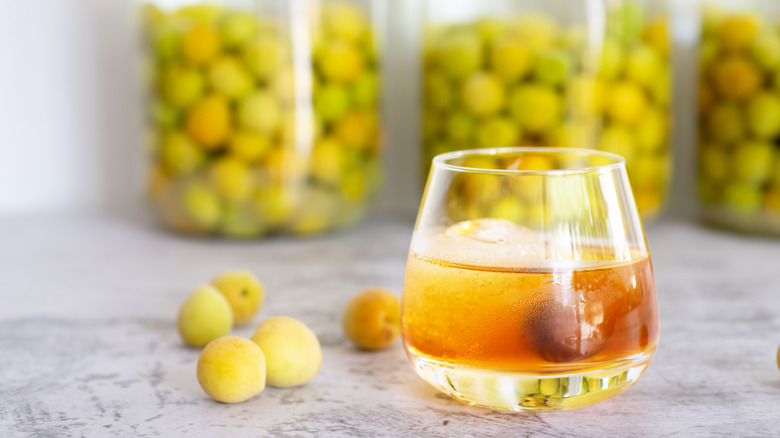Plum Wine Isn't Actually Wine At All
While fruit wines of all kinds have been around for nearly all of documented human history (thanks to the ease of making booze with whatever local fruit happened to be on hand), there are plenty of alcoholic drinks out there today that incorporate fruit — without technically being fruit wine.
One of these is umeshu, commonly called plum wine in the United States. This boozy Japanese drink is tangy and occasionally super sweet, with the unmistakable flavor of ume, known in the U.S. as Japanese plum. But umeshu is not plum wine, nor is ume technically a plum.
A true plum wine would be made by fermenting plums and turning their natural sugars into alcohol. Instead, umeshu is made by soaking plums in liquor, which is why you will often see bottles of umeshu with fat green plums floating at the bottom, looking a bit like juicy Castelvetrano olives.
But it is made from plums
The fruits used to make umeshu are actually more closely related to apricots than they are to plums, but they don't taste much like either. Ume is extremely bitter, and they're not something you'd want to eat raw. So leaving them to soak in alcohol for several months does two things: It adds a bright, sweet flavor to the liquor, but it also allows the plums to break down and become soft and edible. (They can also be pickled and eaten.) However, they should be eaten or removed from the umeshu after about a year, or they will continue to disintegrate.
And since umeshu doesn't require complicated fermentation, you can make it at home, so long as you can find ume at your local Asian market. Just soak them in your spirit of choice for a few months, and voilà! A perfect bottle of umeshu.
How is umeshu made?
Umeshu typically uses a base of Shochu, not to be confused with Soju, the Korean vodka-like spirit made from rice, sweet potatoes, or tapioca. However, this Japanese spirit does use a similar combination of grains and starches, with the addition of a mold called koji.
But other spirits can be used as well, such as sake or any eau de vie, though clear liquors with neutral flavors are the most effective at taking on the flavor of the ume.
Because umeshu can be made with different spirits, it can have very different flavors, and its ABV can vary from about 11% to 15%. This low alcohol content explains why it is commonly found in Japanese restaurants with a wine and beer license, but not a liquor license, since it can still be served. Umeshu can be drunk on the rocks, as a highball with seltzer, or as an ingredient with cocktails. Whiskey is a common pairing with umeshu; you can even spike your beer with it if you feel inclined.



